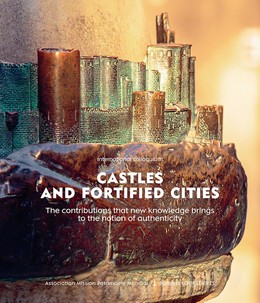Résumé
What does the notion of authenticity mean in different countries? What role can be assigned to old military fortresses? Should monuments be restored? If so, what techniques and what materials should be used? Between interpreting, reinventing, freezing at a moment in time, identically rebuilding, etc., points of view and biases vary depending on national cultures, sensitivities and periods.
Through examples from around the world, from Lebanon to Algeria, by way of Greece, Japan and Korea, this conference examines this complex notion of authenticity, as applied to architectural heritage, fortifications and the study of castles.
Organised as part of the application by 'the City of Carcassone and its sentinel mountain castles' to be added to the UNESCO world heritage list, the event presents conservation models that have been used on other cultural assets. It offers a comparative study of the choices and practices brought into effect on exceptional heritage sites, in particular through the prism of international rules on authenticity.
Sommaire
Inaugural session
Introduction by the President André Viola
Introduction by Nicolas Faucherre
What should be done with castle and fortress ruins? Reflections on authenticity by Philippe Bragard
Part I – The fortifications of the Mediterranean world (1)
Jean Yasmine – Beaufort Castle – Qalaat Ach-Chaqif – Conservation, restoration, reconstruction
Katerina Manousou-Ntella – The monumental ensemble of medieval fortifications in the city of Rhodes
Demetrios Athanasoulis – Restoration and Research Projects of the Peloponnesian Castles (2000-2015): An Assessment
Romuald Casier – The coastal towers of Corsica (1530-2018): Transformation, restoration, conversion ‘between authenticity and metamorphosis’
Part II – Fortifying and controlling a territory
Nicolas Faucherre – An evolving concept: the authenticity of the walled city of Carcassonne and its ‘five sons’, the sentinel mountain castles
Marie-Élise Gardel – The castles of Lastours (Aude, France): unambiguous functional authenticity
Laure Barthet and Michel Sabatier – Montségur and the notion of authenticity
Cipriano Marin et al. – Risco Caído and the sacred mountains of Gran Canaria: the value, authenticity and preservation policy of an Amazigh mountain refuge
Part III – Examples of fortified systems in the Far East
Semina An – The current state of conserving and managing on Namhansanseong’s authenticity
Hiroko Yamane – Authenticity of Cultural Heritage: Fortified Castles of the Edo Period in Japan and Hikone-jo
Part IV –The fortifications of the Mediterranean world (2)
Vincent Ory – Architectural heritage and the problem of authenticity in Turkey: the example of the urban wall in Diyarbarkır
Isik Aydemir – Problems of authenticity regarding the Theodosian walls in Istanbul
Samia Chergui and Safia Benselama-Messikh – Discovering the authentic first wall of the Citadel in Algiers
Safia Benselama-Messikh – Reconnaissance of Bordj Hamza – A small Ottoman fort in the Algerian hinterland – Authenticity, between graphic archives and archaeological evidence
Part V – Other examples of the management of sites and fortified systems in France: the authenticity of existing monuments
Judicaël de la Soudière-Niault – Haut-Koenigsbourg Castle (Alsace): Return after a century of widely publicised criticism – an indicator of how the notion of authenticity has evolved
Lucas Monsaingeon – Case studies on the citadels of Lille and Ajaccio: in favour of a diachronic approach to fortified sites
Maryline Martin and Florian Renucci – Guédelon: a contemporary medieval adventure
Stéphane Gautier – Vitré Castle, between ruin and reconstruction
Conclusion by Michel Cotte
Caractéristiques
Editeur : Loubatières
Publication : 18 mai 2021
Edition : 1ère édition
Intérieur : Noir & blanc
Support(s) : Text (eye-readable) [ePub + PDF]
Contenu(s) : ePub, PDF
Protection(s) : Marquage social (ePub), Marquage social (PDF)
Taille(s) : 99 Mo (ePub), 73 Mo (PDF)
Langue(s) : Anglais
Code(s) CLIL : 3677
EAN13 Text (eye-readable) [ePub + PDF] : 9782862668024
EAN13 (papier) : 9782862667911
Du même thème
Eco-conception des bâtiments Bâtir en préservant l'environnement
0,00 € (gratuit)
Béton écologique et construction durable L'essentiel à savoir pour réussir la transition
23,99 €
BIM et enjeux climatiques Ingénierie & architecture/Enseignement & recherche
27,99 €
Architecture et communication Beyrouth une ville en surimpression
19,99 €





